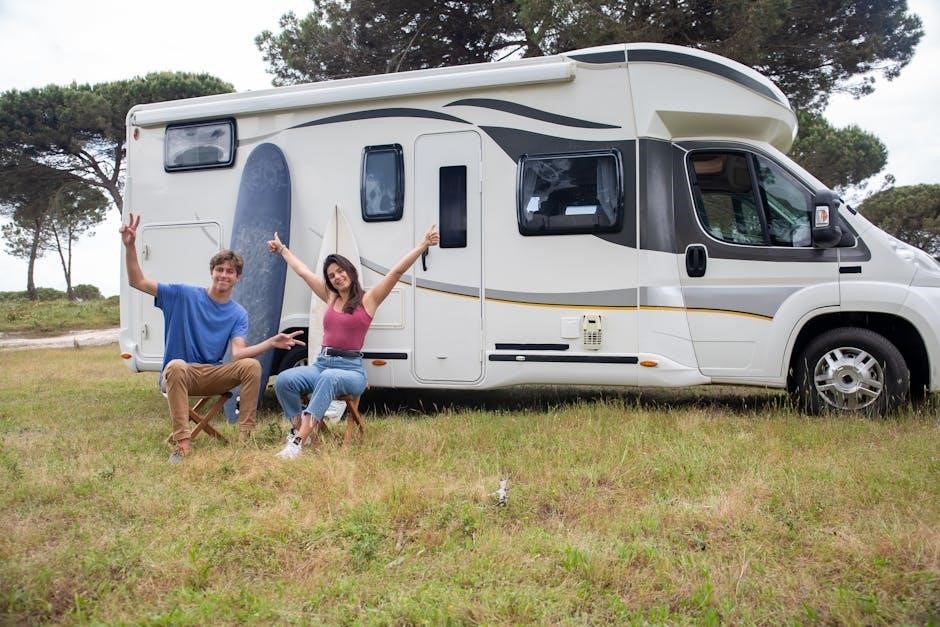Camper trailer wiring guide provides essential information on wiring solutions, including custom and splice-in options, for a safe and functional road trip experience with proper electrical connections and systems in place always․
Understanding the Importance of Proper Wiring
Proper wiring is crucial for a safe and enjoyable camping experience, as it ensures that all electrical systems function correctly and efficiently․ A well-designed wiring system can prevent electrical shocks, fires, and other hazards, while also providing reliable power to appliances and lighting․ The camper trailer wiring guide emphasizes the importance of understanding the basics of electrical wiring, including voltage, current, and resistance, to avoid common mistakes and ensure a safe installation․ By following the guide’s recommendations and using the correct materials and techniques, campers can enjoy a trouble-free and comfortable trip, with all the amenities and conveniences they need․ The guide also covers topics such as wire sizing, circuit protection, and grounding, to help campers understand the importance of proper wiring and how to achieve it․ With proper wiring, campers can have peace of mind and focus on enjoying their trip․
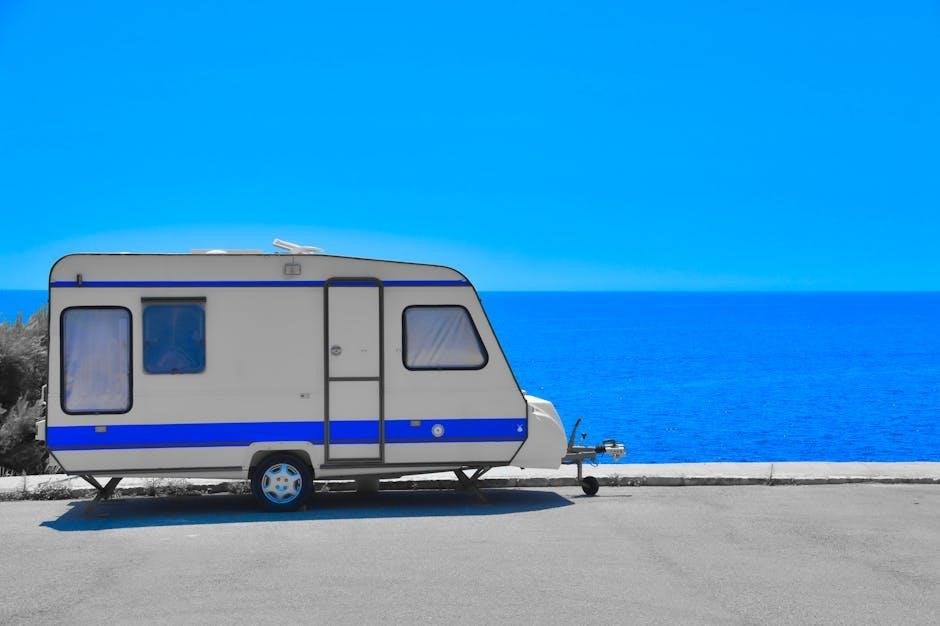
Types of Trailer Wiring Connectors
Trailer wiring connectors include various types, such as flat and round connectors, with different pin configurations for lighter and heavier duty trailers always used․
4-Pin Flat Connector for Lighter Duty Trailers
The 4-pin flat connector is commonly used for lighter duty trailers, such as small utility trailers and campers, and is suitable for trailers without brakes․ This connector has four pins, each with a specific function, including ground, tail lights, and turn signals․ The wire colors for this connector are typically white for ground, brown for tail lights, yellow for left turn signal, and green for right turn signal․ This connector is often used for smaller trailers that do not require a lot of power or complex wiring․ It is a simple and reliable connector that is easy to install and maintain․ The 4-pin flat connector is a popular choice for many trailer owners because of its simplicity and ease of use․ It is also a cost-effective option for those who only need a basic wiring system for their trailer․ Overall, the 4-pin flat connector is a great option for lighter duty trailers․
7-Pin Trailer Wiring Diagram for Heavier Duty Trailers
The 7-pin trailer wiring diagram is used for heavier duty trailers that require more complex wiring systems․ This diagram includes additional pins for auxiliary power, reverse lights, and brake controls․ The 7-pin connector is typically used for larger trailers that have more advanced electrical systems, such as trailers with electric brakes or multiple axles․ The wiring diagram for a 7-pin connector is more complex than a 4-pin connector, but it provides more functionality and flexibility․ The 7-pin connector is commonly used for trailers that require a higher level of electrical power, such as RVs or horse trailers․ It is also used for trailers that have advanced safety features, such as anti-lock braking systems․ The 7-pin trailer wiring diagram is an essential tool for anyone who needs to wire a heavier duty trailer, as it provides a clear and concise guide for connecting the various electrical components․ This diagram is widely available online and can be easily accessed by trailer owners․
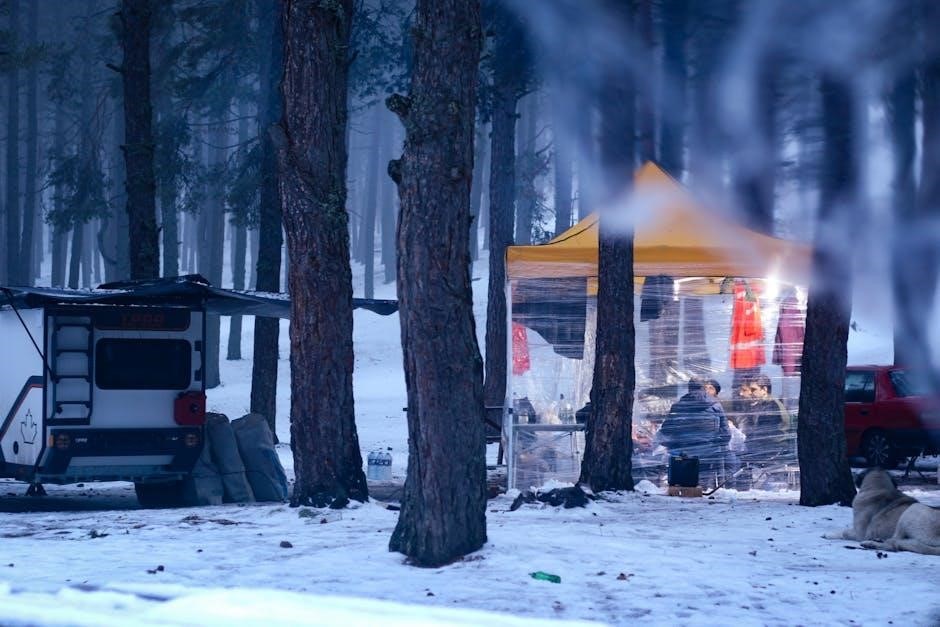
Color Coded Trailer Wiring Diagram
Color coded trailer wiring diagrams provide a clear guide for wiring trailers using standard colors for each wire function and purpose always correctly․
Wire Colors and Their Functions
Understanding the functions of different wire colors is crucial for a camper trailer wiring guide․
The white wire is typically used as the ground wire, while the brown wire is used for tail lights, side markers, and running lights․
The yellow and green wires are used for turn signals and brake lights, with the yellow wire designated for the left turn signal and brake light, and the green wire for the right turn signal and brake light․
A color coded trailer wiring diagram can help to clarify the functions of each wire color and ensure that the wiring is installed correctly․
This information is essential for ensuring that the electrical systems of the trailer function properly and safely․
Proper wiring is critical for powering appliances, maintaining safety systems, and ensuring that lights, brakes, and signals function as intended․
By following a camper trailer wiring guide and understanding the functions of different wire colors, individuals can ensure a safe and functional road trip experience․
This guide provides valuable information for those looking to wire their camper trailer correctly․
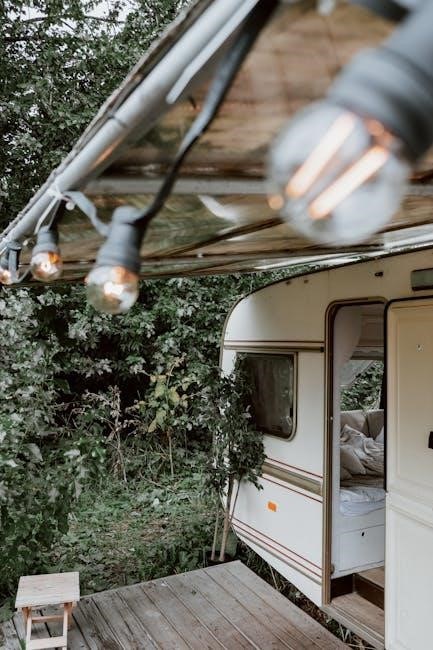
Wiring Installation Solutions
Wiring installation solutions include custom, splice-in, and replacement options for camper trailers with various electrical systems and requirements always needing proper installation methods․
Custom Wiring for Unique Trailer Setups
Custom wiring for unique trailer setups is often necessary to ensure proper electrical connections and functionality․ This type of wiring installation solution is ideal for camper trailers with specialized systems or equipment․ A custom wiring setup can be designed to meet the specific needs of the trailer, taking into account the type and number of appliances, lighting, and other electrical components․ By working with a qualified electrician or using a wiring guide, individuals can create a custom wiring plan that meets their trailer’s unique requirements․ This approach can help to prevent electrical problems and ensure a safe and reliable connection to the tow vehicle․ With a custom wiring setup, camper trailer owners can enjoy a wide range of benefits, including increased flexibility and convenience․ Whether you have a small utility trailer or a large RV, custom wiring can be tailored to meet your specific needs and provide a reliable electrical connection․ Proper planning and installation are key to a successful custom wiring setup․
Splice-in Wiring for Existing Harnesses
Splice-in wiring for existing harnesses is a convenient solution for camper trailer owners who need to add or modify electrical connections․ This approach involves splicing new wires into the existing wiring harness, allowing for the addition of new appliances, lights, or other electrical components․ By using a splice-in wiring kit, individuals can easily connect new wires to the existing harness, eliminating the need for a complete rewiring job․ This method is particularly useful for trailers with complex wiring systems or for those who are not comfortable with extensive wiring work․ Splice-in wiring kits usually include everything needed to complete the job, including wire connectors, splice connectors, and instructions․ With a little patience and attention to detail, camper trailer owners can successfully splice new wires into their existing harness, expanding their trailer’s electrical capabilities and enhancing their overall camping experience; Properly spliced wires can provide a reliable and safe electrical connection, ensuring years of trouble-free use․
Replacement Wiring for Damaged or Corroded Wires
Replacement wiring for damaged or corroded wires is a crucial aspect of maintaining a camper trailer’s electrical system․ Over time, wires can become damaged or corroded due to exposure to the elements, resulting in faulty electrical connections and potential safety hazards․ Replacing damaged or corroded wires with new ones can help ensure a reliable and safe electrical connection․ It is essential to use high-quality replacement wires that meet the trailer’s original specifications to prevent future problems; The replacement process typically involves identifying the damaged or corroded wires, disconnecting them from the trailer’s electrical system, and installing new wires in their place․ This may require some technical expertise, but it is a necessary step to maintain the trailer’s electrical integrity․ By replacing damaged or corroded wires, camper trailer owners can prevent electrical failures, reduce the risk of accidents, and enjoy a safe and trouble-free camping experience․ Proper replacement wiring can also help to prevent electrical fires and other hazards․
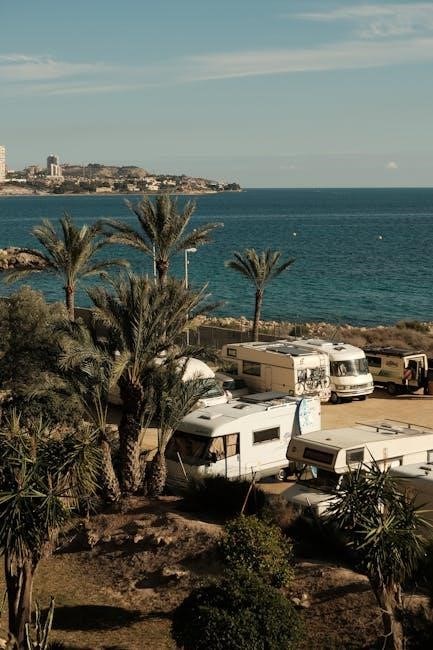
Power Consumption and Wiring Considerations
Calculating power needs for appliances and systems is crucial for camper trailer wiring to ensure safe and efficient electrical connections always using proper methods and techniques available online today․
Calculating Power Needs for Appliances and Systems
To calculate power needs for appliances and systems in a camper trailer, it is essential to consider the total power consumption of all devices and systems, including lighting, heating, and cooling․ This calculation will help determine the required capacity of the electrical system, including the battery, generator, and wiring․ A camper trailer wiring guide can provide valuable information on how to calculate power needs and design an electrical system that meets the specific requirements of the trailer․ The guide may include formulas and tables to help with the calculation, as well as recommendations for wiring and component selection․ By accurately calculating power needs, camper trailer owners can ensure a safe and reliable electrical system that meets their needs and provides a comfortable and convenient camping experience․ The calculation should take into account the power consumption of all appliances and systems, including those that may be added in the future․
